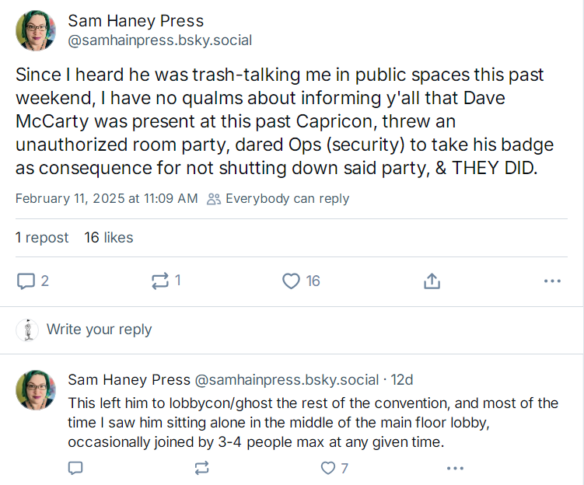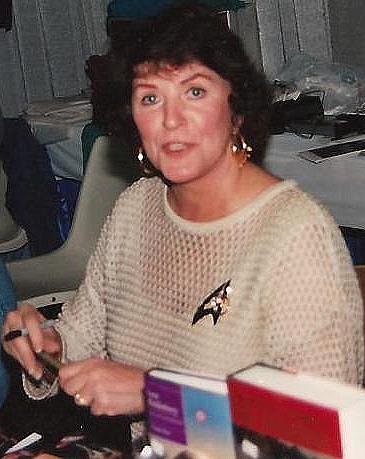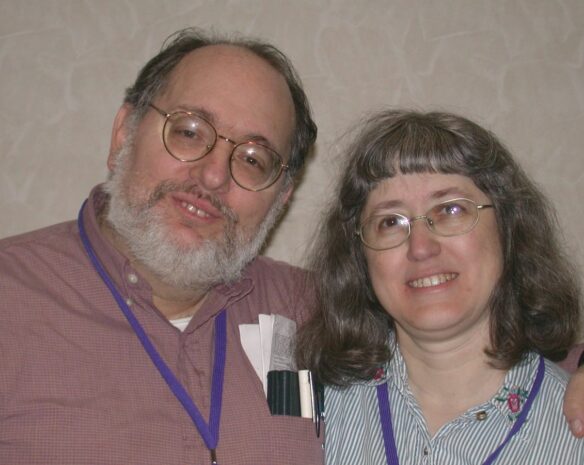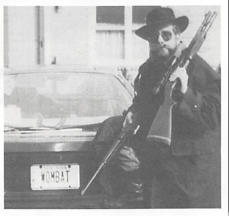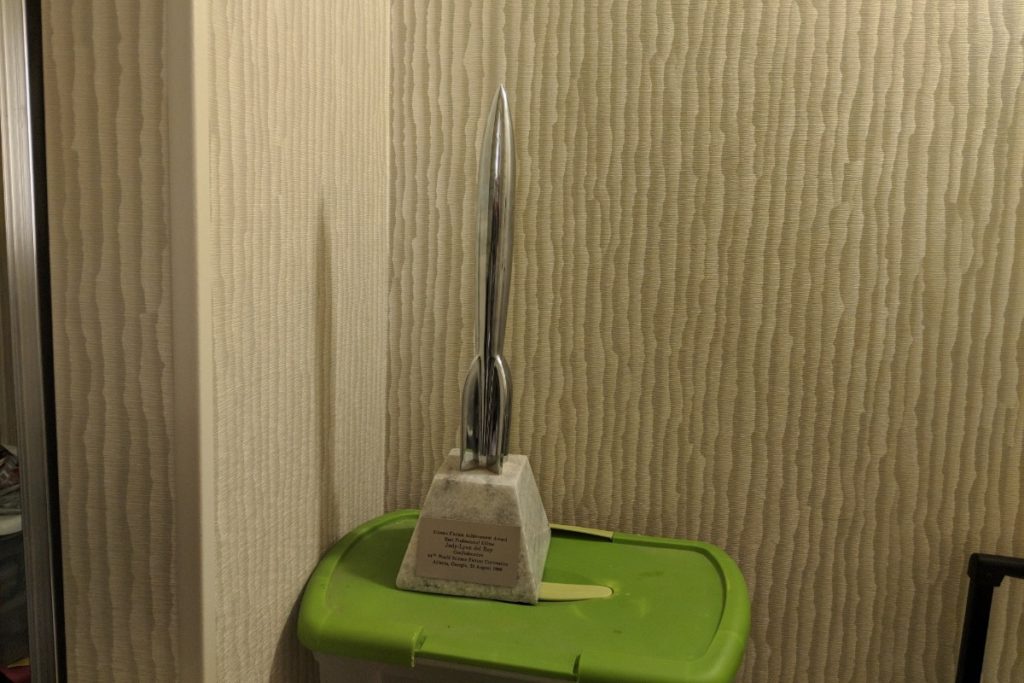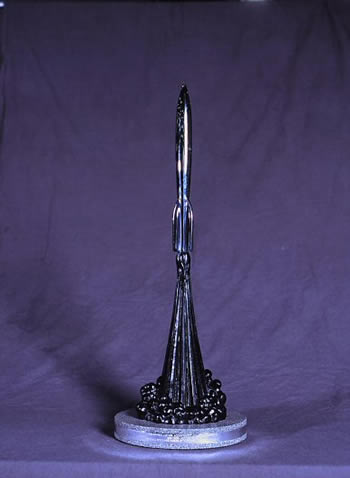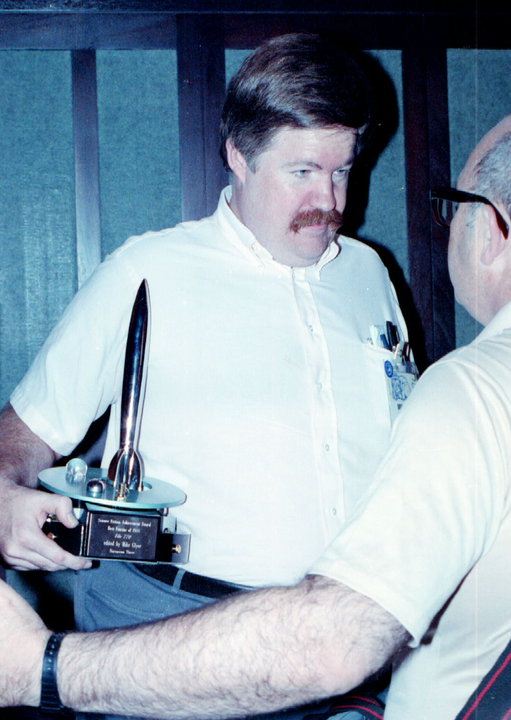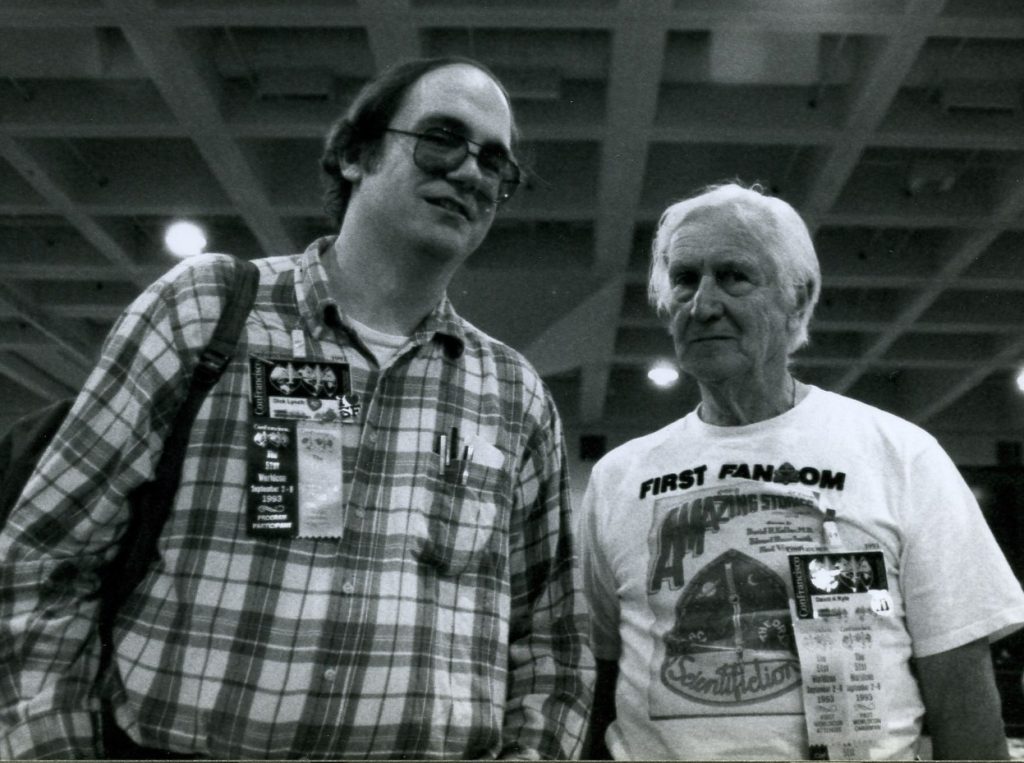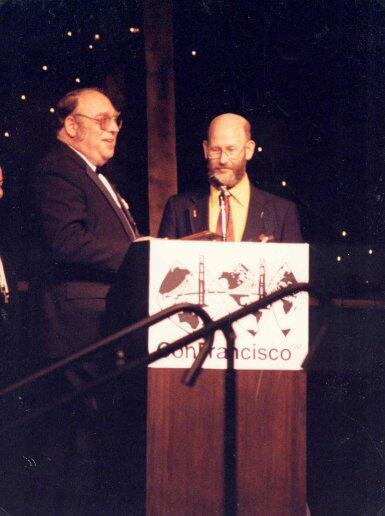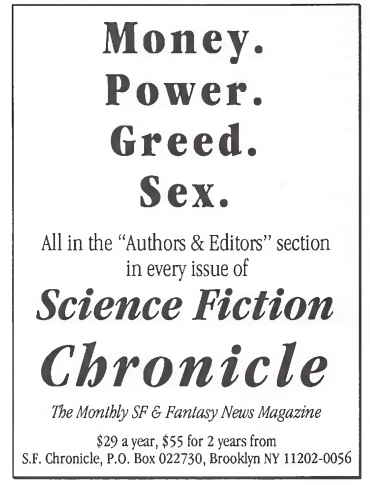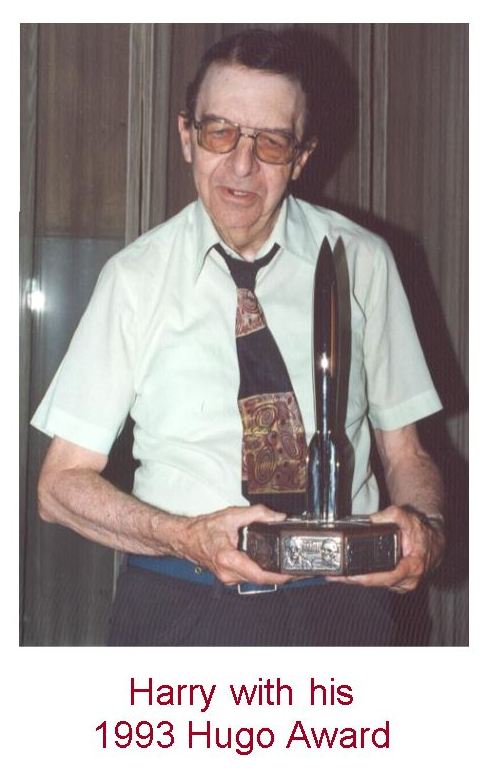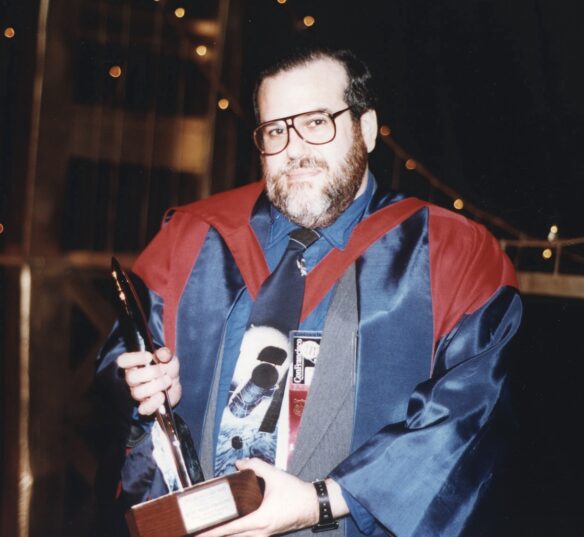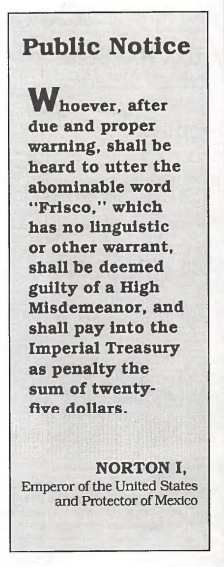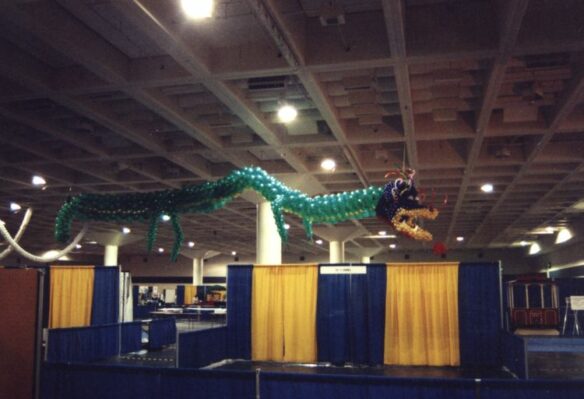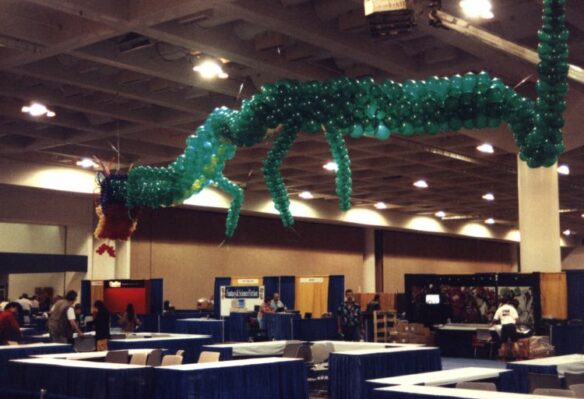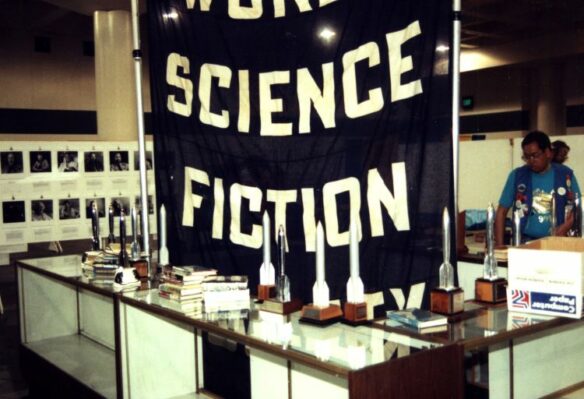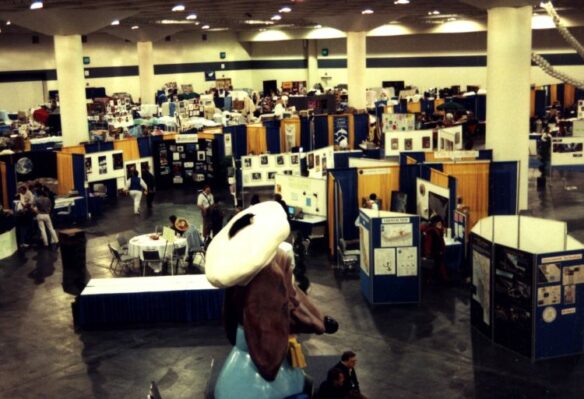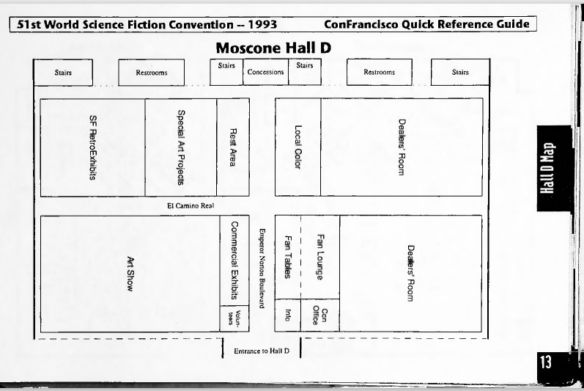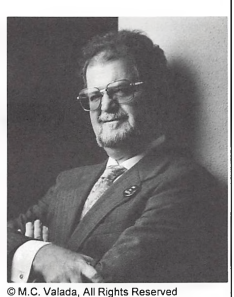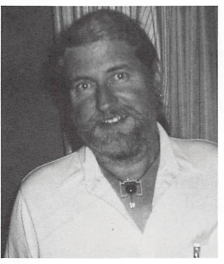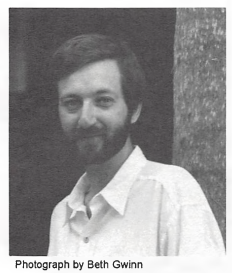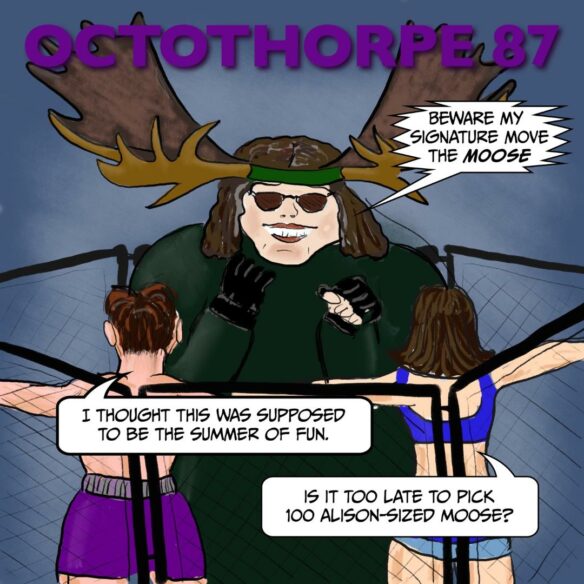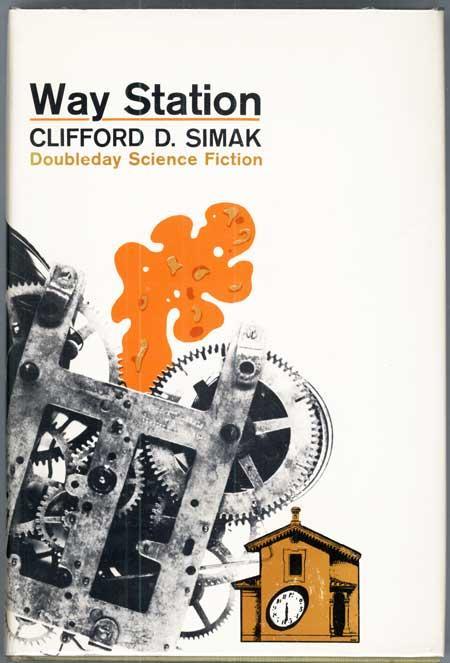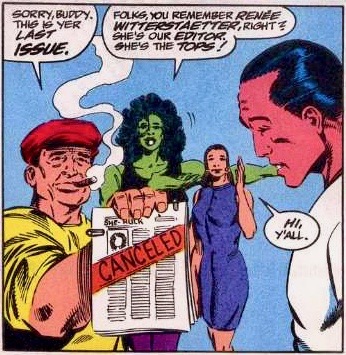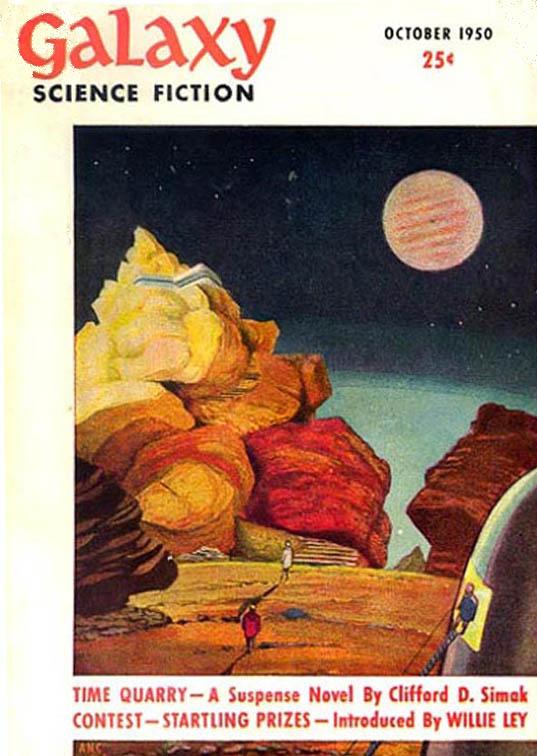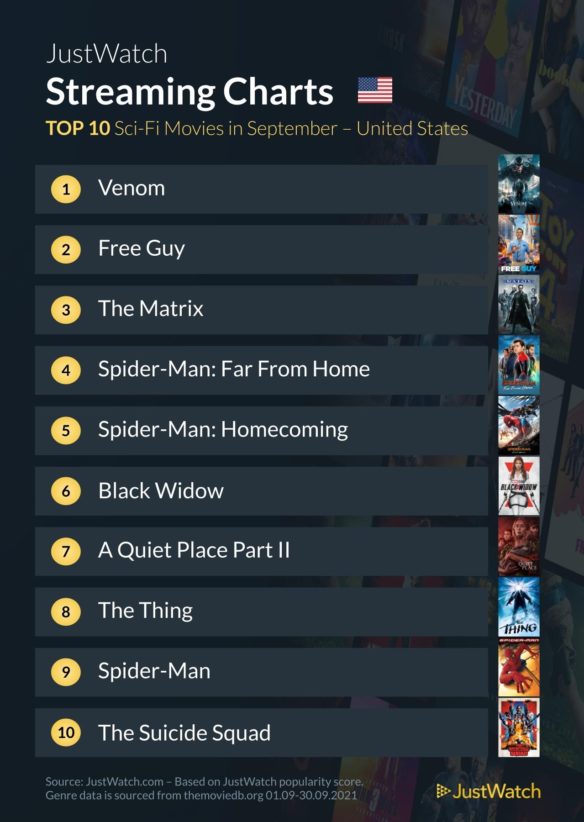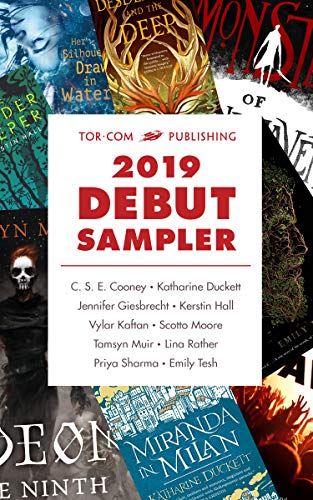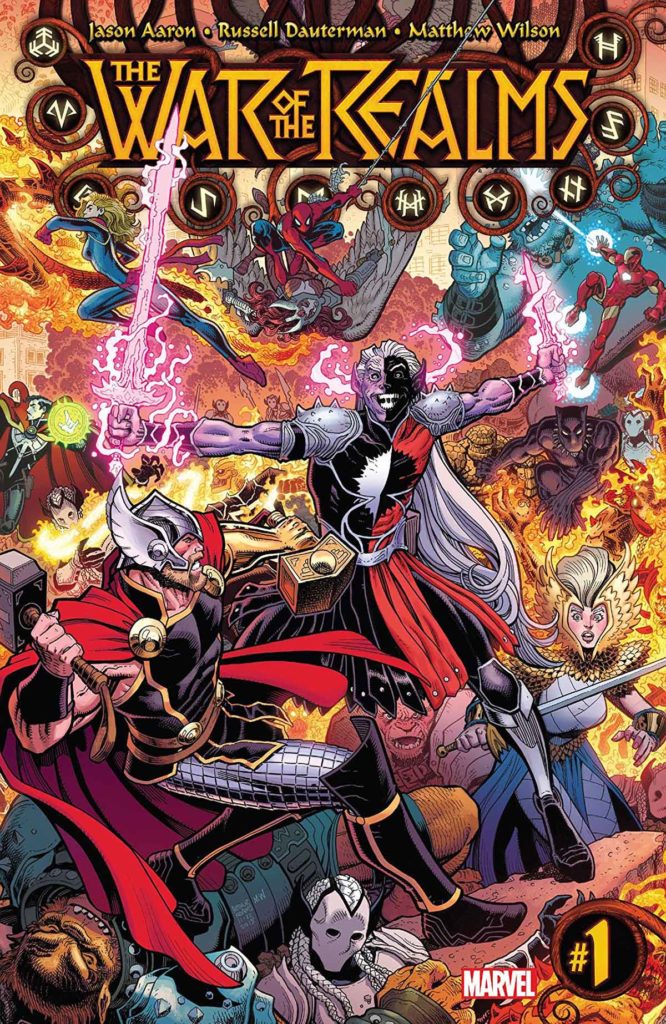(1) IAIN M. BANKS TV ADAPTATION. “’Consider Phlebas’ Series Set At Amazon From Charles Yu & Chloé Zhao” reports Deadline.
Amazon MGM Studios is developing science fiction TV series Consider Phlebas. It is an adaptation of the novel by Iain M Banks, the first in the late Scottish author’s classic 10-book Culture book series about an interstellar post-scarcity society.
Interior Chinatown creator Charles Yu is writing and executive producing. The potential series also is executive produced by Nomadland Oscar winner Chloé Zhao through her production company Books of Shadows, Dede Gardner and Jeremy Kleiner for Plan B Entertainment as well as Adele Banks.
In Consider Phlebas, while war rages between the utopian Culture and the Idiran Empire, a Culture Ship AI “Mind” takes refuge on a forbidden planet. Both Horza, a shape-shifting mercenary working for the Idirans, and Balveda, a “Special Circumstances” Culture agent, have been tasked with retrieving it to tip the balance in a galaxy-spanning conflict. Consider Phlebas pits sentience against AI in an epic and bloody quest across the cosmos….
(2) WHY NOT SAY WHAT HAPPENED? Episode 20 of Scott Edelman’s Why Not Say What Happened? podcast, “The Barry Smith Comic Book Which Caused Me to Disobey My Parents”, has all the burning bridges that have fallen after him….
In my latest look back at the comics field of the ’70s, I share about the home away from home Phil Seuling built for fandom which earned his recent much-deserved accolade, whether the Ethics columns I wrote for The Comics Journal during the ’80s burned any bridges (and if I even cared those bridges were on fire), the kung fu comic book series I’d completely forgotten I’d pitched to Marvel, why my job in the Bullpen stunned writer/editor/artist Bob Budiansky, the Barry Smith Agent of S.H.I.E.L.D. comic which caused me to disobey my parents, my initial fears I might not last long enough at Marvel to be eligible to receive unemployment benefits if I were fired, and much more.
The whole series can be downloaded from a variety of platforms at this link.

(3) GALLIFREY ONE WINDING DOWN. LA’s legendary Doctor Who convention Gallifrey One will end its run in 2028. But another LA event in the same spirit will keep the torch burning into the future. “Gallifrey One To Conclude in 2028… But The Moment Has Been Prepared For” writes Shaun Lyon.
It was with a heavy heart that we announced on February 16, 2025, at the end of this year’s convention Closing Ceremonies, that Gallifrey One will be coming to an end in 2028, after three more events over the next three years. Our February 2028 convention will conclude an unprecedented, sometimes inexplicable and definitely historic 38-year run as the world’s largest and longest-running annual Doctor Who fan event….
…Those of us who have been on this journey for decades have earned the right to go out on our own terms. We aren’t interested in passing along our name or reputation to someone else, someone untested, who might squander the good will we engendered in the fan community. We don’t ever want Gallifrey One to be remembered as the convention that didn’t know when to quit, or is looked back upon with regret: it was great, until it wasn’t.
Most importantly, we want it to be a testament to all the people who brought it forward, from the launch in January 1989 to our first convention in May 1990, through decades of memories and connections (and even a year without one, thank you COVID) until today, when it’s the destination so many people look forward to. So many friendships have come about through the convention. People have met and married through Gallifrey One; babies have grown up with their families attending. And along the way, we’ve also lost so many friends through the passage of time; friends gone, but never forgotten.
We also gave our fandom three years’ notice. We didn’t want to spring this on all of you at the last minute. Many of our former attendees we know would love to come back again before we’re done. Many others out there who dream of attending one day, now have three years to plan if they want to make it in time. We didn’t have to do it, and we certainly didn’t do it to make any of you panic; this was a gift to our dedicated fan base, so that you know you’re being looked after and don’t need to think about the future… quite yet.
We don’t want the fandom that we’ve engendered here for so long, the friendships and families and memories we’ve shared, to disappear. That is why we are confidently moving forward with our plans.
We still have three more events to bring you before we close the book. In 2026, we will proudly present our thirty-sixth convention, The 36 Legends of Gallifrey One: Stories Untold on February 6-8 due to the NBA All Star Game on our regular weekend. (More details about that convention on the wrap-up article & 2026 preview also posted today.) In 2027, our thirty-seventh convention (already named, and we will share it next year) will also be a week or two after our regular weekend (the Super Bowl returns to LA that month). And finally, in 2028, we’ll present the last Gallifrey One convention: a last hurrah and final reunion as ourselves, with a convention name our former chairperson came up with more than thirty years ago….
…In discussing the end of Gallifrey One in 2028 with Jason [Joiner] and Paul [Jones], it became apparent to us that the best opportunity to continue the spirit of our convention was with them: Showmasters Events has the financial strength to run a Doctor Who show here, run in a manner resembling much of Gallifrey One — but not entirely. Put simply, they don’t want Gallifrey One’s fan community to disappear after 2028 any more than we do. And they’ve committed to running a show, while not a non-profit event like Gallifrey One, that operates much like it does today. They have the contacts we have, and most importantly, the capital to put up (this type of event is expensive, and everyone gets paid up front these days, including the hotel and the guests.) Some of Gallifrey One’s team, as well as some guests and attendees, have already committed to helping them through the transition, so that programming operates in much the same way (discussion panels, for instance), the photos and autographs continue, your favorite dealers can continue to vend, and so forth.
We also asked them not to use the Gallifrey One name, as that brand — that legacy — retires with us; they were completely in agreement that this would be something new, but still for the fans….
(4) HOW TO DONATE TO THE LEEPER SCHOLARSHIP FUND. [Item by Evelyn C. Leeper.] People have asked more specifically how to donate to the Leeper Mathematics Scholarship.
The main page is <https://www.umassfoundation.org>, but the specific page is:
<https://minutefund.uma-foundation.org/project/29554/donate?fund_id=GEN%20SCH>
Under the Fund Designation field, select “Other” from the very bottom of the list. This will open a text box where you can write in any fund/designation you would like to support, in this case “Leeper Mathematics Scholarship”.
At the bottom of the page, you can indicate who it is “In Memory Of”.
(5) WENDY AND RICHARD PINI MAKE MASSIVE DONATION. “ElfQuest Creators Donate $500,000 To Columbia University Comics Archive” reports Forbes.
Wendy and Richard Pini, the couple behind the long-running ElfQuest independent comics series, are donating $500,000 to Columbia University to endow and conserve the school library’s growing collection of comics, graphic novels and related prose works.
“The money will go for acquisitions and stewardship for circulating and archival collections,” said Karen Green, the curator for comics and cartoons within Columbia’s Rare Book & Manuscript Library. “Stewardship is a really all-embracing and umbrella term, covering digitization, preservation, anything to make sure things are accessible safely. There was a big ‘et cetera’ to the grant.”…
…Thus, in 2012, at San Diego Comic-Con, where Wendy was making one of her regular appearances, Green approached the Pinis with a compelling question: “Would you consider allowing us to preserve your legacy?”
A year later, the couple had turned over some 37 linear feet of boxes of ElfQuest-related material, including more than 2,000 of Wendy Pini’s hand-drawn, hand-painted storyboards from 1978 through about 1990….
(6) OH CAPTAIN, MY CAPTAIN. With David S. Goyer’s departure from Foundation, Inverse suspects “The Most Ambitious Sci-Fi Epic on TV Could Be In Big Trouble”.
In the sprawling future depicted by Foundation, everyone has pretty much forgotten about the planet Earth. But over several generations can remember the predictions of one man: Hari Seldon. Played by Jared Harris in the first two seasons of Foundation, the character of Seldon is able to see the twists and turns of the future history of the human Empire through a process called psychohistory. But even the study of psychohistory couldn’t have predicted what’s happening to Foundation after its upcoming third season. Because now, the show’s real-life Hari Seldon — creator David S. Goyer — is leaving the show, along with the existing writing staff.
In short, after the next season of Foundation, the literal foundation for the show’s future is very unclear.
As revealed in a newsletter from Goyer’s official site, and reproduced in its entirety on the Foundation subreddit, the writer and producer is leaving taking a massive step back from the show. Here’s what he said:
“I know a lot of you have been waiting for an update. Season 3 will likely be dropping this summer, premiere date TBD. We finally get to the Mule’s story. Expect a few surprises along the way – even for those of you who’ve read the original trilogy.
“To set the record straight, I did decide to step back from the show. S3 will be the last season with my day-to-day involvement, along with most of my fellow directors and writers. I adore the cast and it was a difficult decision. The reasons for my leaving are complicated and were certainly exacerbated by strike-related issues. The biggest reason is that I was forced to spend a ton of time in Europe, away from my family – and after 5 ½ years, it was becoming a drag on my soul. That said, I do believe Apple will green-light S4. Best of luck to the next creative team.”…
(7) ALSO HEADING FOR THE EXIT. There’s a crucial turnover coming at Lucasfilm, too: “Star Wars Succession: Who Will Replace Kathleen Kennedy?” asks The Hollywood Reporter.
…But who should Disney choose to inspire greatness in the next generation of Star Wars creatives now that longtime Lucasfilm boss Kathleen Kennedy is retiring later this year?
The job hunt will be like nothing before in Lucasfilm history. Star Wars creator George Lucas hand picked Kennedy in 2012 to run the company before selling his ownership stake to Disney, which elected to keep her in place. Now, for the first time, Disney will pick somebody new to lead its galaxy far, far away.
During her tenure, Kennedy guided the Star Wars brand across many celebrated achievements (such as the franchise’s return to theaters with The Force Awakens and its successful shift to TV with The Mandalorian). She has also been often criticized for the franchise’s many missteps (including some lackluster movies and shows, and overseeing numerous announced-and-discarded projects). The executive — along with Disney in general — has also often been targeted by franchise’s fandom for diverse casting moves and a perceived “woke” agenda (a perception that Disney boss Bob Iger has been eager to move past)….
(8) ROBERTO ORCI (1973-2025). Robert Orci, a writer-producer with credits on the Star Trek, Xena, Hercules, and Transformers franchises, died February 25. Deadline paid tribute: “Roberto Orci Dead: ‘Star Trek’, ‘Transformers’ Writer-Producer Was 51”.
Roberto “Bob” Gaston Orci, a writer-producer who worked on some of the biggest action-adventure and sci-fi movies and television shows from the first two decades of the century, died at his home in Los Angeles today, Feb. 25, after a battle with kidney disease. He was 51.
Born and raised in Mexico City, Orci moved to the United States with his family when he was 10. He started off as a writer-producer on Xena: Warrior Princess and Hercules: The Legendary Journeys and for most of his career was partnered with Alex Kurtzman.
Orci was co-writer/producer on the 2009 Star Trek movie reboot and its two sequels as well as on the 2007 Transformers movie and the 2009 followup Transformers: Revenge of the Fallen. Orci’s feature credits also include writing work on Mission Impossible III and The Legend Of Zorro and producing on the Now You See Me franchise, The Proposal, Eagle Eye, The Mummy as well as The Amazing Spider-Man 2, which he also co-wrote….
(9) TODAY’S BIRTHDAY.
[Written by Cat Eldridge.]
February 25, 1971 — Sean Astin, 54.
Let’s talk about Sean Astin who played Samwise Gamgee in The Lord of The Rings films. I’ll admit that he was one of my favorite hobbits in the trilogy and Sean did a sterling job of bringing his character to life here, didn’t he? I’ll also admit that I’d completely forgotten that he wasn’t in The Hobbit as in I tend to think that the hobbits in The Hobbit were the same as those who were in the trilogy.
Before The Lord of The Rings, he showed in his first film playing Mikey Walsh in The Goonies. No, not genre (remember My Birthday Write-up, my rules what gets included here) but a really fine YA treasure hunt adventure in which everyone has fun. Well not everyone.
He has a lead role in Toy Soldiers, a film I still have an odd fond spot for, as William “Billy” Tepper. Damn I liked those toy soldiers. I even had some of the action figures a long time ago.
He was Stuart Conway in a film named after a time travel device called Slipstream that was stolen by a group of bank robbers. Might be interesting to see. Any of you seen it?
He voiced Shazam in a pair of animated DC films, Justice League: War and Justice League: Atlantis, almost proving there are might be too many DC animated films, though I have seen the second one and it’s rather well done. Look he even did a Lego one!
In the Department of Films That I Never Knew Existed Off Novels I Never Knew Were Written is Terry Pratchett’s The Colour of Magic, which proves how prolific he was or how bad my memory is, at any rate Sean is Twoflower here.
Dorothy and the Witches of Oz is a 2012 series of a decade ago which apparently covered The Wonderful Wizard of Oz, Ozma of Oz, The Road to Oz and The Magic of Oz. Somewhere in there, he was Frack Muckadoo, a servant of Princess Langwidere.
He even got to voice Raphael in the Teenage Mutant Ninja Turtles: Wrath of the Mutants series.
I think the last thing I’ll mention is that he showed up in a brief recurring role on The Big Bang Theory series as Dr. Greg Pemberton, one of a team of Fermi-Lab physicists who accidentally confirmed the Super-Asymmetry paper published by Sheldon and Amy. Wasn’t that an amazingly fantastic series?
Did you know that a spin-off of the original series was in development first several years now? More promisingly, on October 10, 2024, it was announced that a third spin-off will feature Stuart Bloom, Denise, and Bert Kibbler, with Kevin Sussman, Lauren Lapkus, and Brian Posehn reprising their roles.
Yes, there’s other kibbles and bits which I’m sure you’ll point out, but I need tea now

(10) COMICS SECTION.
- Dinosaur Comics discusses phones in sf.
- Glasbergen Comics sends back a different Terminator.
- Rubes shows a bedtime reader who made the right choice.
- Saturday Morning Breakfast Cereal sends a rescue message.
- Shoe plays the latest version of a country song.
- The Contrarian takes us to the Eye of Sauron.
(11) MARVEL CINEMATIC FEUD. Deadline quoted Rob Liefeld’s latest salvo: “’Deadpool’ Creator Calls For Marvel’s Kevin Feige To ‘Get Off Mound’ After ‘Captain America’s Box Office Crash”. (In case you’ve forgotten, Liefeld made news at the time of the Deadpool & Wolverine premiere in 2024 saying he was ignored by Feige on the red carpet and found out his family was not invited to the afterparty.)
The post-Avengers: Endgame era at the box office has been challenging for Marvel, with only a few exceptions such as Guardians of the Galaxy Vol. 3 and Deadpool & Wolverine.
Box office results for the second weekend of Captain America: Brave New World showed a 68% drop week-to-week, positioning it as the third-most significant drop in the Marvel Cinematic Universe. The two films that fared worse were The Marvels, with a 78% dropoff, and Ant-Man and the Wasp: Quantumania at 68%.
Following the report of Brave New World’s results, Liefeld took to X (formerly Twitter) and posted: “Get Feige off the mound. He’s spent.”
Liefeld quoted all the Marvel films that have dropped more than 60% at the box office in its second weekend, saying in another X post that the “MCU is on an extended downside.”
“This is beyond a trend, it’s become the norm,” Liefeld said. “If this was sports, Feige would be removed. Marvel brand is like Dodgers, Lakers, Yankees, Celtics, coaches that win championships are removed a year later when the results are disappointing.”
In another X post he added, “8 movies crash over the last 3 years. Don’t we want better movies? You get the curiosity crowd then plunge.”…
(12) WARNER BROS. SQUEEZES ITS GAME BUSINESS. “Wonder Woman Video Game Canceled at Warner Bros., Studio Shut Down” – The Hollywood Reporter lists the casualties.
Warner Bros. Discovery is restructuring its video game division and shutting down three of its studios as it refocuses its efforts on some core intellectual property.
In connection with the restructuring, the company also said that it is ending development of its Wonder Woman game, which it first announced back in 2021. Instead, the company will focus on “building the best games possible with our key franchises -– Harry Potter, Mortal Kombat, DC and Game of Thrones,” per a Warner Bros. Games spokesperson.
The spokesperson added that three of the company’s game studios: Monolith Productions, Player First Games and Warner Bros. Games San Diego, will shut down amid the changes. Monolith had been developing the Wonder Woman game….
(13) HERE’S MY NUMBER AND A DIME. [Item by Steven French.] “Riki don’t lose that number …!” “If you’re going to call aliens, use this number” recommends Phys.org.
Let’s dive into one of those cosmic curiosities that’s bound to blow your mind: how we might chat with aliens. And no, I’m not talking about elaborate coded messages or flashy signals. We’re talking about something incredibly fundamental—21 cm radiation.
If you’re planning on having a conversation across the vastness of space, using light waves (electromagnetic radiation) is pretty much your go-to option. It’s fast, reliable, and, well, it’s the most practical way to shout out to other civilizations in the universe. But why specifically 21 centimeters? That’s where things get juicy.
This 21 cm radiation isn’t just some random frequency we picked out of a hat. It’s tied to something very essential, known as the hydrogen spin flip. Hydrogen atoms consist of one proton and one electron, and these tiny particles have a property called “spin.”
Think of spin like a little arrow pointing up or down. Every so often, in the vast reaches of space, a hydrogen atom’s electron can flip its spin, going from a state where its spin is aligned with the proton to one pointing in the opposite direction. This flip releases energy in the form of radiation at—you guessed it—a wavelength of 21 centimeters.
So why does this matter? Well, any smart civilization, whether they have blue skin, tentacles, or something more bizarre, will eventually discover hydrogen, understand spin, dabble in quantum mechanics, and figure out this whole 21 cm radiation thing. They’ll call it something different (they won’t have “21” or “cm”) but the concept remains universal. It’s like the cosmic Rosetta Stone….
(14) AH, THE BEACHES OF MARS. “Mars once had an ocean with sandy beaches, researchers say” – the Guardian has the resort brochure.
Mars may not seem like a prime holiday spot with its arid landscape and punishing radiation levels, but it once boasted beaches, researchers have found.
While previous discoveries of features including valley networks and sedimentary rocks has suggested the red planet once had flowing rivers, there has been debate among scientists over whether it also had oceans.
Now researchers say they have fresh evidence to support the idea after discovering buried beaches on Mars.
Writing in the Proceedings of the National Academy of Sciences, the scientists report how they made the discovery after they analysed below-ground imaging data from China’s Zhurong rover.
“Zhurong was sent to southern Utopia Planitia near locations where paleoshorelines have been mapped from satellite data,” said Dr Benjamin Cardenas, a co-author of the research from Penn State University.
The authors say the results from the northern lowlands of Mars are similar to those obtained at shorelines on Earth using ground-penetrating radar: both indicate features in the subsurface material that are tilted – and with a similar angle – towards the lowland, or ocean, direction.
“Typically the radar picks up on even subtle changes in sediment size, which is probably what’s happening here,” said Cardenas.
The researchers say this Martian beach appears to have shifted position over time. The data reveals a series of features dipping towards the north – something Cardenas said indicated the beach grew out into the ocean. “In fact, it grew at least 1.3km north into the ocean.”
Cardenas said the implications were exciting. “It’s a simple structure, but it tells you there had to be tides, there had to be waves, there had to be a nearby river supplying sediment, and all these things had to be active for some extended period of time,” he said….
(15) SMILE FOR THE CAMERA. “This City’s Sewer System Is Full of Alligators, but It’s Not New York” brags the New York Times (behind a paywall).
An enduring urban legend has it that blind, albino alligators patrol New York City’s sewers. These mythical crocodilians have become ingrained in the city’s lore, and some New Yorkers even celebrate Alligator in the Sewer Day each February.
But in Florida, alligators in the sewers are no myth. The reptiles routinely find their way into municipal drainpipes. In late January, a 10½-foot gator was rescued in Cape Coral after it got stuck in a storm drain.
And not all alligators end up in sewers by accident. Recently published research in the journal Urban Naturalist reveals that alligators and nearly three dozen other species use storm water sewer systems in one urban area of Florida to safely traverse urban environments.
“It’s like something out of ‘Teenage Mutant Ninja Turtles,’” said Alan Ivory, a Ph.D. student at the University of Florida who led the research. “The abundance of animals down there was surprising.”
While there has been thorough research on rats in sewer systems, what other animals are up to under the streets is less documented. Mr. Ivory and his colleagues suspected that these subterranean labyrinths, which are built to divert storm water and are separated from sewage systems, serve as important pathways for urban animals.
Mr. Ivory and his colleagues focused on storm water sewers under the city of Gainesville. The scientists outfitted motion-activated trail cameras with magnetic mounts and fastened them underneath manhole covers. Overall, 39 cameras were deployed in 33 storm water drains.
The cameras were left for 60 days, but not all of them survived that long. Some were swept away by storm water, while others were pilfered by bandits with sticky paws.
Who has non-opposable thumbs and apparently likes stealing motion-activated trail cameras placed by scientists? These guys. Alan Ivory, via UF/IFAS
“We would have raccoons steal cameras every now and then,” Mr. Ivory said. “They would climb up the ladders and tear them off the manholes.”…
(16) ELDRITCH LAUGHTER. Scotto.org remembers “H.P. Lovecraft: Stand-Up Comedian!” from 2015. You can watch it on YouTube. Includes jokes like, “I was worrying about the Boston Massacre. Do you know how many people actually died in the Boston Massacre? Five people. That’s not a massacre. That’s an afternoon snack for Cthulhu.”

Ran for six performances, Tues & Wed nights, April 28-May 13, 2015, at Annex Theatre in Seattle. Remounted for two performances, Sept 5 & 7, 2015, at Bumbershoot. I wrote the script and played Howie; my pal K. Brian Neel directed.
“Instead of expressing his terrifying vision of malevolent, eldritch gods via horror stories in the early twentieth century, H.P. (‘Howie’ to his friends) Lovecraft expresses his terrifying vision in the present day via stand-up comedy. But an ancient evil stirs beneath the sea— can Howie pull off one last sold-out gig before the human race is destroyed?”
[Thanks to SF Concatenation’s Jonathan Cowie, Steven French, Kathy Sullivan, N., Evelyn C. Leeper, Scott Edelman, Lisa Hertel, James Bacon, Mark Roth-Whitworth, Teddy Harvia, Mike Kennedy, Andrew Porter, John King Tarpinian, Chris Barkley, and Cat Eldridge for some of these stories. Title credit belongs to File 770 contributing editor of the day PhilRM.]

